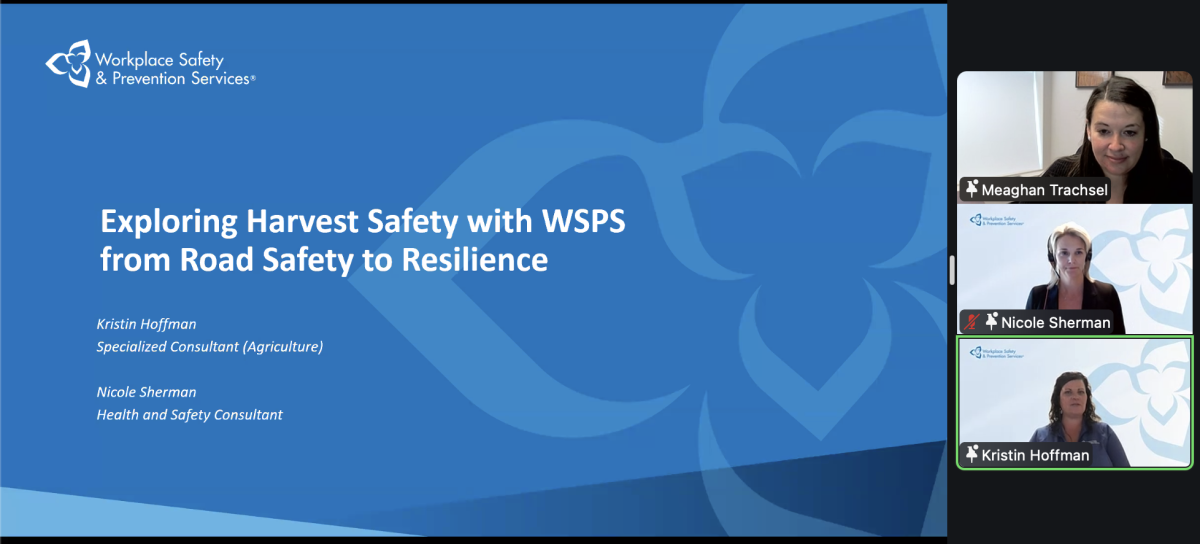Still-rising food prices all across Canada helped limit a decline in consumer prices last month compared to September 2008, Statistics Canada reports.
The federal statistics agency said Friday that the primary upward pressure on its September 2009 consumer price index (CPI) came from food prices, which rose 2.8 per cent in the previous 12 months.
However, the agency said, this was the slowest rate of growth since June 2008. The food price component, which takes a relative importance of 17.04 per cent in the overall CPI, had risen four per cent from August 2008 to August 2009.
Read Also

Exploring Harvest Safety
Kristin Hoffman of WSPS explains measures for increased farm safety around harvest season
Both food purchased from stores and from restaurants were responsible for the rise of the food component in September, StatsCan said.
Food costs continued to be pushed up by higher prices for food purchased from stores, up 2.7 per cent in September compared to September 2008. Prices for meat increased 2.6 per cent, StatsCan said, while prices for fish rose 8.8 per cent.
Increases were also reported for dairy products and eggs (2.5 per cent), sugar and confectionery (8.7 per cent) and food purchased from restaurants (2.8 per cent).
Offsetting those increases were the prices for fresh fruit, down 4.5 per cent in the past 12 months.
“Factors putting upward pressure on consumer prices varied considerably from province to province, but rising food prices were common across them all,” StatsCan said.
The overall CPI slipped 0.9 per cent from September 2008 to September 2009.
Other CPI components recording price increases were household operations, furnishings and equipment (2.2 per cent), health and personal care (3.9 per cent), and recreation, education and reading (1.1 per cent). Alcoholic beverage and tobacco product prices were up 2.6 per cent in the same period.
Contributing to the overall year-over-year decline in the CPI were transportation costs, down 7.2 per cent. Aggregate energy costs were down 18.7 per cent in the same period.
Shelter costs, meanwhile, dropped 1.8 per cent year-over-year, while clothing and footwear costs declined by 1.2 per cent.
The only province in which consumer prices rose overall in the 12 months to September was Saskatchewan, up 0.2 per cent, with seven of the eight major components of the CPI rising. The only component to post a decline there was transportation costs, down 10.3 per cent.
Overall, the most significant downward pressure on prices in all provinces came from lower gasoline prices, which fell by as much as 26 per cent in Alberta compared with September 2008, StatsCan said.














